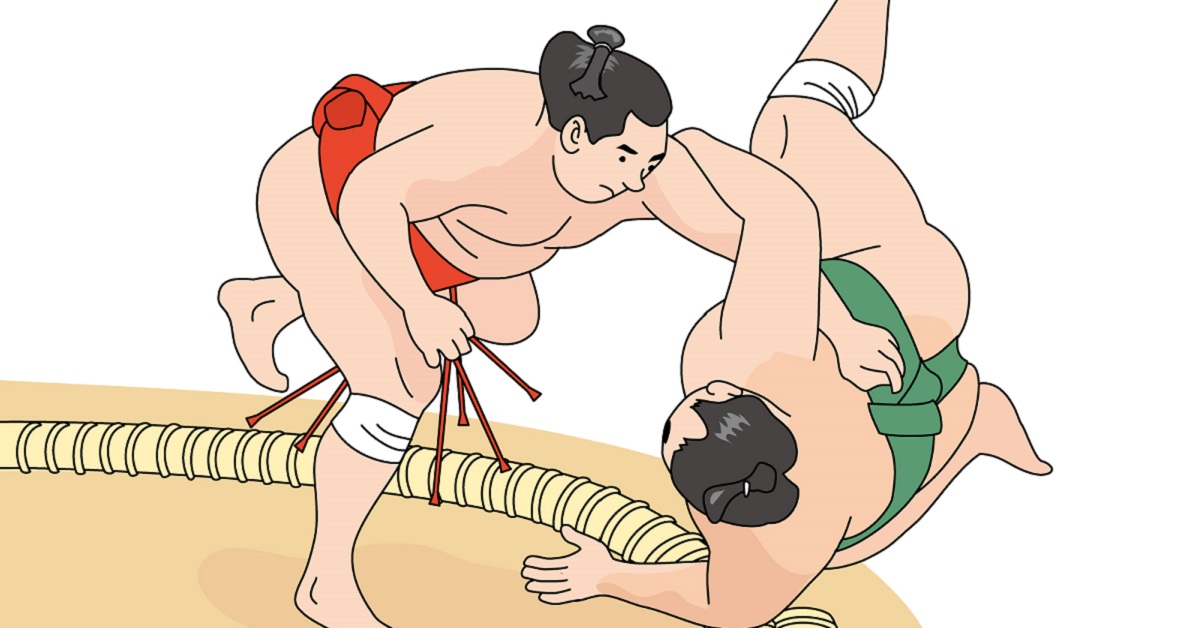In sumo, few techniques capture the audience’s attention as strongly as tsuppari. With explosive speed and raw power, wrestlers thrust their open palms against their opponents to break balance and dominate the match. For beginners and foreigners, this technique offers an immediate and thrilling entry point into understanding the intensity of sumo.
What is Tsuppari? A First Step to Understanding the Appeal of Sumo
When talking about sumo, one technique that cannot be overlooked is “tsuppari”. Tsuppari refers to thrusting at an opponent’s chest, shoulders, or neck with the open palms, delivering rapid strikes that add speed and intensity to the bout. This technique is not just about pushing; it also involves rhythm, distance control, and body coordination, making it a key highlight for spectators. Especially for beginners and foreigners, the fierce and fast tsuppari demonstrates that sumo is not only about quiet grappling but also about explosive combat.
The Basic Mechanics and Features of Tsuppari
Tsuppari is often executed right at the initial clash when the wrestlers collide at the start. The palms strike repeatedly, driving the opponent backward. The use of open hands instead of fists is its defining characteristic, making it a pushing rather than striking technique. It sets up opportunities to drive the opponent out of the ring.
Types of tsuppari can be categorized as follows:
| Type | Features | Main Purpose |
|---|---|---|
| Frontal thrust | Aimed at the chest from the front | Forces the opponent backward |
| Side thrust | Aimed at the face or shoulder from the side | Breaks the opponent’s balance |
| Throat thrust | Pushing at the throat area | Disrupts breathing and takes initiative |
| Continuous thrust | Rapid repeated thrusts | Prevents opponent from regaining stance |
Though it looks simple, tsuppari has multiple variations, and choosing which one to use is part of a wrestler’s tactical strategy.
Wrestlers Known for Their Tsuppari
Looking back at sumo history, many wrestlers have specialized in tsuppari. Yokozuna like Chiyonofuji and Asahifuji, as well as larger wrestlers such as Kaio and Kotooshu, used it to great effect. Those who excel at tsuppari often launch fierce attacks right from the start, pulling the audience in immediately.
| Wrestler | Style of Tsuppari | Impression on Fans |
|---|---|---|
| Chiyonofuji | Remarkable speed and sharpness | Can decide a bout instantly |
| Kaio | Heavy and powerful thrusts | Overpowers opponents with strength |
| Kotooshu | Uses long reach effectively | Large build yet agile |
| Asashoryu | Relentless and fiery thrusts | Overwhelming intensity |
Bouts featuring wrestlers who rely on tsuppari are easy to follow for beginners and often showcase the most exciting moments in sumo.
How Tsuppari Differs from Other Techniques
Sumo includes various winning techniques such as “oshi-dashi” (frontal push out) and “yori-kiri” (force out). Among them, tsuppari serves as an entry point of attack. Oshi-dashi decides the match by pushing the opponent out, while tsuppari is the method used to break their stance beforehand. Yori-kiri depends on close body contact, whereas tsuppari can be executed effectively from a distance.
| Technique | Distance | Method | Impact on the Bout |
|---|---|---|---|
| Tsuppari | Mid-range | Open palm thrusts | Creates momentum for attack |
| Oshi-dashi | Close-range | Push with chest/torso | Final push for victory |
| Yori-kiri | Grappling | Forcing forward while holding | Pure strength battle |
| Throwing techniques | Close | Use opponent’s arm/torso to throw | Possibility of reversal |
Thus, tsuppari is not usually the finishing blow but rather a critical setup for the flow of the match.
Body Mechanics and Training Supporting Tsuppari
To deliver effective tsuppari, a wrestler needs more than arm strength. It requires lower body stability, hip strength, arm speed, and controlled breathing. Especially the legs and hips determine the force of thrusts. Wrestlers strengthen these aspects through repeated basic training such as shiko (leg stomps) and teppo (striking practice).
| Training Method | Description | Effect on Tsuppari |
|---|---|---|
| Shiko | Raising and stomping legs | Builds lower body strength |
| Teppo | Striking a wooden pole repeatedly | Enhances arm power and explosiveness |
| Suri-ashi | Sliding footwork practice | Improves balance and stability |
| Butsukari-geiko | Full-contact pushing practice | Develops real-match intensity |
Through these practices, wrestlers sharpen the sharpness of their tsuppari and increase their match-day impact.
How Spectators Can Enjoy Tsuppari
For sumo fans, tsuppari is one of the easiest attacks to recognize. Spectators focus on the sound of the strikes, the speed of the thrusts, and the wrestlers’ expressions. For beginners and foreigners, tsuppari is often the most visually thrilling part of a bout, making it a natural gateway into the sport.
| Viewing Point | Explanation |
|---|---|
| Sound | The loud “paaan” sound of palm strikes creates excitement |
| Speed | Rapid fire thrusts highlight agility and tempo |
| Expression | Wrestlers’ determination and intensity are clearest here |
| Flow of Match | Tsuppari often shifts momentum and can decide the bout |
Understanding tsuppari adds depth to the viewing experience and helps fans appreciate the complexity of sumo.
Conclusion
Tsuppari is both a fundamental yet profound technique in sumo. It reflects the wrestler’s style, tactics, and personality. For beginners and foreign audiences, tsuppari is accessible and easy to understand, serving as a perfect introduction to the excitement of sumo. By learning its history and training methods, spectators can enjoy matches on a much deeper level. Next time you watch sumo, pay attention to the speed, rhythm, and intensity of tsuppari, and how it sets up the decisive moments of the bout.





コメント